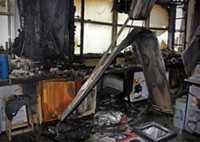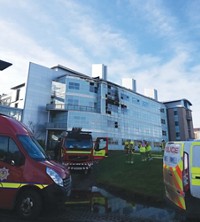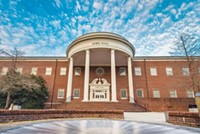Advertisement
Grab your lab coat. Let's get started
Welcome!
Welcome!
Create an account below to get 6 C&EN articles per month, receive newsletters and more - all free.
It seems this is your first time logging in online. Please enter the following information to continue.
As an ACS member you automatically get access to this site. All we need is few more details to create your reading experience.
Not you? Sign in with a different account.
Not you? Sign in with a different account.
ERROR 1
ERROR 1
ERROR 2
ERROR 2
ERROR 2
ERROR 2
ERROR 2
Password and Confirm password must match.
If you have an ACS member number, please enter it here so we can link this account to your membership. (optional)
ERROR 2
ACS values your privacy. By submitting your information, you are gaining access to C&EN and subscribing to our weekly newsletter. We use the information you provide to make your reading experience better, and we will never sell your data to third party members.
Lab Safety
University of St. Andrews installs temporary labs to replace those destroyed by fire
Renovations, modular building to cost £12 million
by Dalmeet Singh Chawla, special to C&EN
August 1, 2019
| A version of this story appeared in
Volume 97, Issue 31

The University of St. Andrews is setting up temporary facilities for staff affected by a fire that destroyed the university’s biomedical sciences building earlier this year.
The fire, which broke out on Feb. 10, started when “a routine post-experiment wash-up went wrong,” the university previously said.
“Although the building’s compartment design restricted the spread of the blaze, the operation to douse the flames caused extensive water-damage to all areas” of the facility, the university says. No students or staff were injured during the incident.
For researchers dislocated from their labs, the university is adding new chemistry research labs within the Purdie Building, home to the School of Chemistry. That work will cost £3 million ($3.6 million).
In addition, the university in July began installing a temporary two-story building composed of 40 modular units. This building will include space for biology teaching and research labs, as well as offices. The project will cost the university £9 million ($11 million) and should be completed by mid-October, the school says.
A university spokesperson tells C&EN it’s not yet clear how long the temporary building will be needed. More work must be done to determine when the permanent facilities will be restored, the spokesperson says.





Join the conversation
Contact the reporter
Submit a Letter to the Editor for publication
Engage with us on Twitter